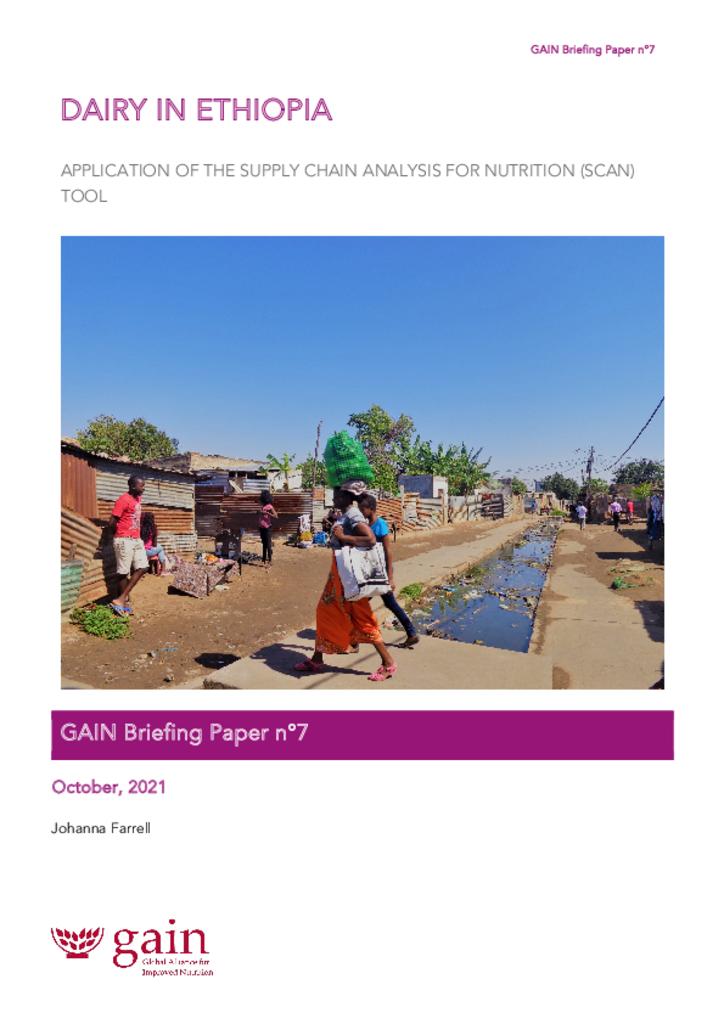In Ethiopia, per capita annual consumption of dairy is just 11% of World Health Organization recommended levels. Low incomes are a key constraint to dairy consumption, as many consumers cannot afford to buy dairy in recommended quantities. Key sector constraints are centred around rural scarcity, high prices, and quality concerns. To support the improvement of the dairy sector in Ethiopia, this briefing paper presents a supply chain analysis of dairy in Ethiopia, with a focus on the barriers and possible mechanisms for scaling.
The results suggest that the potential of dairy products to improve nutrition is high, especially for drinking milk and yoghurt products, and should be explored through traditional and informal channels. Collaborative efforts to support smallholder farmers are needed to improve milk supply and quality. Concerns about low disposable incomes should be addressed through single-serve product variations to promote affordability.
Operational constraints in the traditional and informal sectors should be addressed through sustainable mechanisms, such as improved access to refrigeration systems (e.g., mobile coolers).
